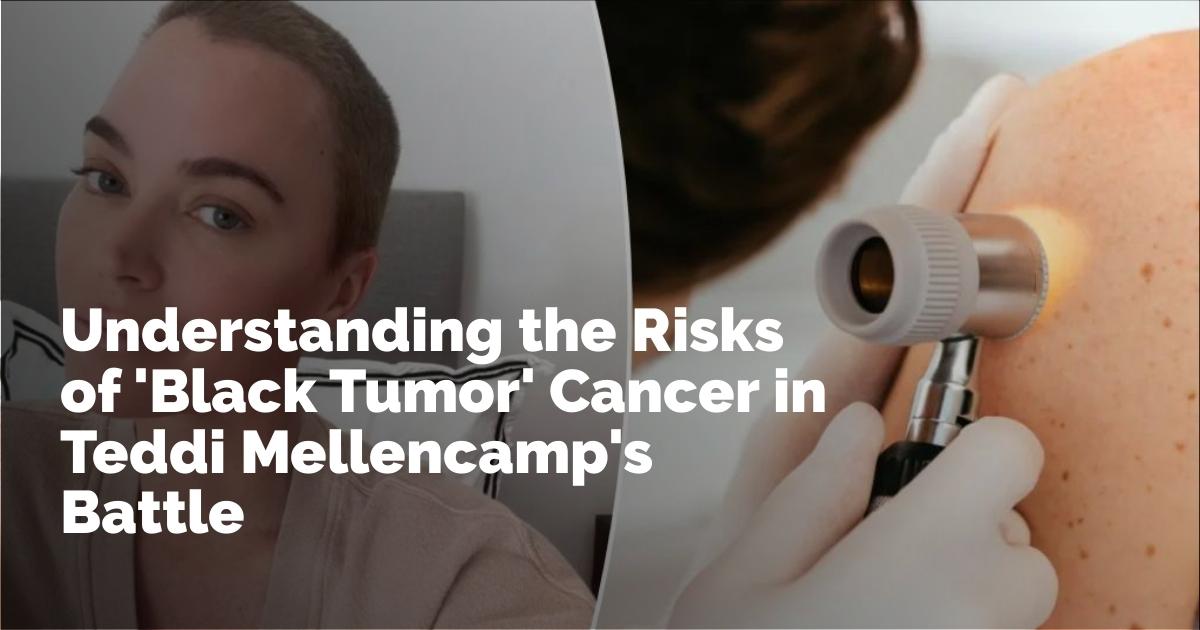Understanding the Gravity of Melanoma: The Case of Teddi Mellencamp
Teddi Mellencamp, a personality from reality TV, is facing a dire challenge with a severe form of Stage 4 skin cancer known as melanoma. The situation has become increasingly critical as the cancer has spread to both her lungs and brain. This development underscores the aggressive nature of melanoma, often referred to as a "black tumor," which claims the lives of approximately 8,000 Americans each year. Understanding melanoma, its risks, prevention strategies, and survival odds are essential in combatting this aggressive cancer.
What Makes Melanoma So Dangerous?
Unlike other forms of skin cancer, such as basal cell carcinoma which typically remains localized on the skin, melanoma holds a pernicious reputation for its tendency to spread, or metastasize, quickly to other parts of the body. This characteristic is what makes melanoma particularly dangerous and life-threatening. Dr. Viktoryia Kazlouskaya, a notable dermatologist, emphasizes the tenacity of melanoma compared to other less aggressive skin cancers. Once melanoma starts spreading, it can rapidly travel through the lymphatic system and blood vessels, making early detection crucial.
Identifying Melanoma: What to Look For
Melanoma often manifests as a new or changing mole, distinguished by its irregular border, asymmetrical shape, or varied coloration, which can include brown, black, red, pink, or even white hues. The "ABCDE" method is a widely recognized approach for identifying potential melanomas:
- Asymmetry: One half of the mole does not match the other.
- Border Irregularity: Edges may be ragged or blurred.
- Color Variation: A variety of colors within the same mole.
- Diameter: Moles larger than 6 mm, about the size of a pencil eraser.
- Evolution: Changes in size, shape, or color over time.
However, even these characteristics can sometimes make diagnosis challenging. Dr. Kazlouskaya notes that while regular moles can appear large or irregular, they are not necessarily dangerous, and sometimes melanomas may not even present with notable abnormalities or pigmentation. Hence, professional evaluation by a dermatologist is often necessary for suspicious lesions.
Who is at Risk for Melanoma?
Melanoma does not discriminate; it can affect individuals of all skin tones and ethnic backgrounds. Nonetheless, individuals with lighter skin are at a higher risk due to lower melanin levels that offer lesser protection against harmful UV rays. The American Cancer Society (ACS) reports a stark contrast in lifetime melanoma risk based on ethnicity, with white people facing a 1 in 33 chance, compared to 1 in 1,000 for black people.
Risk increases with certain features and lifestyles — those with red or blonde hair, blue or green eyes, fair skin that freckles or burns easily, are particularly susceptible. Additionally, age plays a role; although the average diagnosis age is 66, melanoma is notably common in young adults under 30, particularly among women.
Other contributing factors to heightened risk include gender (males have a higher incidence), having multiple moles, personal or familial history of melanoma, and past incidents of blistering sunburns, especially during childhood. Individuals who spend significant time outside also have increased risk due to higher exposure to ultraviolet radiation.
Proactive Measures: How to Protect Yourself from Melanoma
The principal cause of most skin cancers is overexposure to ultraviolet (UV) radiation. Therefore, mitigating UV exposure is key in reducing melanoma risk. Some effective protective measures include:
- Regular Sunscreen Use: Applying broad-spectrum sunscreen with at least SPF 30 every day protects against both UVA and UVB rays. Sunscreen should be reapplied throughout the day, particularly after swimming or sweating.
- Protective Clothing: Wearing hats, long sleeves, and sunglasses when outside.
- Mindful Sun Habits: Avoid direct sunlight exposure from 10 a.m. to 4 p.m. when UV rays are strongest, and seek shade when possible.
- Weather Awareness: UV rays penetrate clouds and reflect off surfaces like water and snow, so protection is essential regardless of weather conditions.
Prognosis: What Are the Survival Odds Against Melanoma?
Melanoma is dubbed one of the most lethal cancers due to its potential for rapid progression and metastasis. Early detection remains the best strategy for effective treatment. In initial stages, melanoma can typically be addressed with surgical removal, promising an optimistic prognosis. When melanoma is confined to the skin, as many as 99 out of 100 patients may survive five years post-diagnosis.
However, the outlook drastically changes if melanoma spreads (metastasizes) to distant organs such as the lungs or liver, with survival rates dropping to just 35 out of 100 patients over the same period.
Projections from the ACS indicate that by 2025, around 104,960 new cases of melanoma will be diagnosed in the United States, with an anticipated death toll of approximately 8,430. These figures accentuate the urgency for vigilance and proactive skin monitoring.
If any unusual skin changes are noticed, it is imperative to seek a dermatological evaluation promptly. Early intervention can be lifesaving, emphasizing the importance of timely professional consultations in managing skin health.
출처 : Original Source

